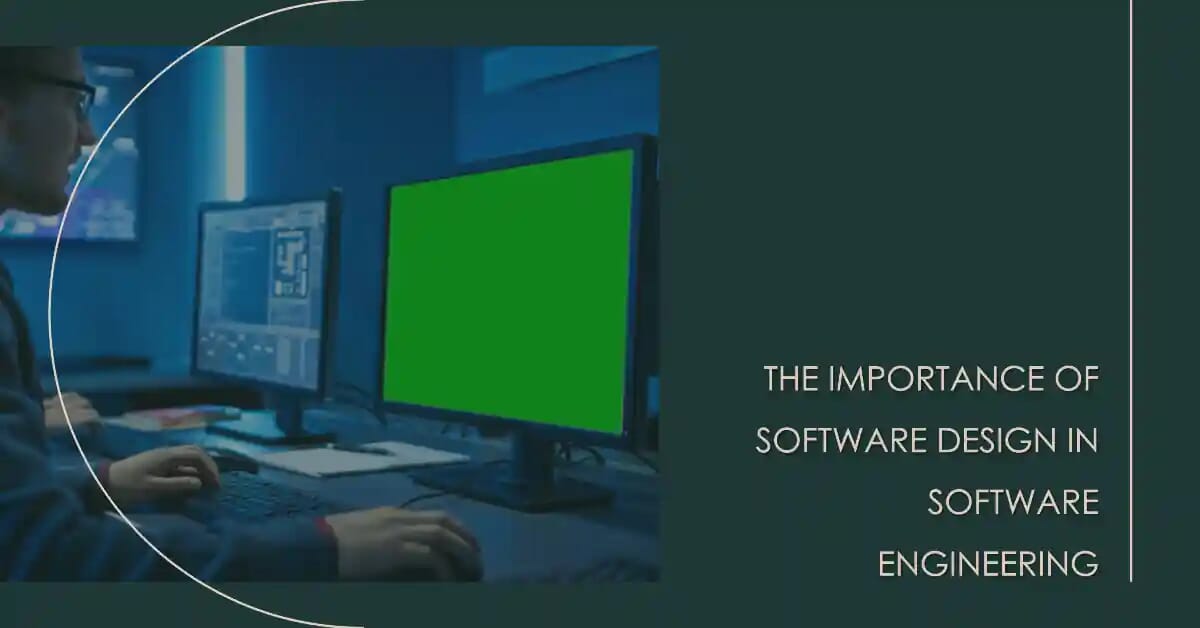Software design plays a crucial role in the field of software engineering, enabling software engineers to create efficient, reliable, and maintainable software systems. It encompasses the process of transforming requirements and specifications into a blueprint that outlines the structure, behavior, and components of a software solution. By employing various design principles, methodologies, and techniques, software engineers can develop software that meets user needs, adheres to industry standards, and facilitates future modifications and enhancements.

In the realm of software engineering, software design is a fundamental aspect of the software development life cycle. It bridges the gap between requirements gathering and implementation, providing a systematic approach to translate functional and non-functional requirements into a well-structured software architecture. A software engineer, specializing in software design, is responsible for analyzing user needs, understanding system constraints, and creating a design that fulfills those requirements.
The process of software design involves multiple stages and considerations. It begins with the identification of software requirements, followed by architectural design, detailed design, and finally, component-level design. During the architectural design phase, software engineers define the overall structure of the software system, determining the high-level components, their interactions, and the allocation of functionality. This phase lays the foundation for the subsequent detailed design, where engineers delve into the specifics of each component, defining interfaces, algorithms, and data structures.
To facilitate effective software design, software engineers employ various design methodologies and principles. One popular approach is the object-oriented design, which emphasizes encapsulation, inheritance, and polymorphism to organize and structure software components. This approach promotes modularity, reusability, and extensibility, allowing software engineers to build complex systems in a more manageable and scalable manner. Other design methodologies, such as structured design or model-driven design, may be employed depending on the specific project requirements and constraints.
Throughout the software design process, software engineers strive to achieve specific design qualities, including modularity, cohesion, and low coupling. Modularity refers to the division of a software system into self-contained modules that can be developed and tested independently. This promotes ease of maintenance and enables parallel development efforts. Cohesion measures the degree to which elements within a module are related to each other, while low coupling indicates loose dependencies between modules, reducing the impact of changes and enhancing system flexibility.
Software design also involves considering non-functional requirements, such as performance, security, and scalability. Engineers must carefully analyze these requirements and incorporate design decisions that address these concerns. For example, a software engineer may choose specific data structures or algorithms to optimize performance or implement security measures to safeguard sensitive data.
Moreover, software design goes beyond the technical aspects of the software system. It also encompasses the user experience and user interface design. Software engineers must ensure that the system is intuitive, visually appealing, and easy to navigate. They consider factors such as usability, accessibility, and user interaction patterns to create a positive user experience.
In conclusion, software design is an essential component of software engineering, enabling software engineers to transform requirements into a well-structured and functional software system. It involves a systematic and iterative process, incorporating various methodologies, principles, and considerations. Through effective software design, software engineers can create robust, scalable, and user-friendly software solutions that meet the needs of users and stakeholders.



